How to provide fresh greens for chickens in winter.
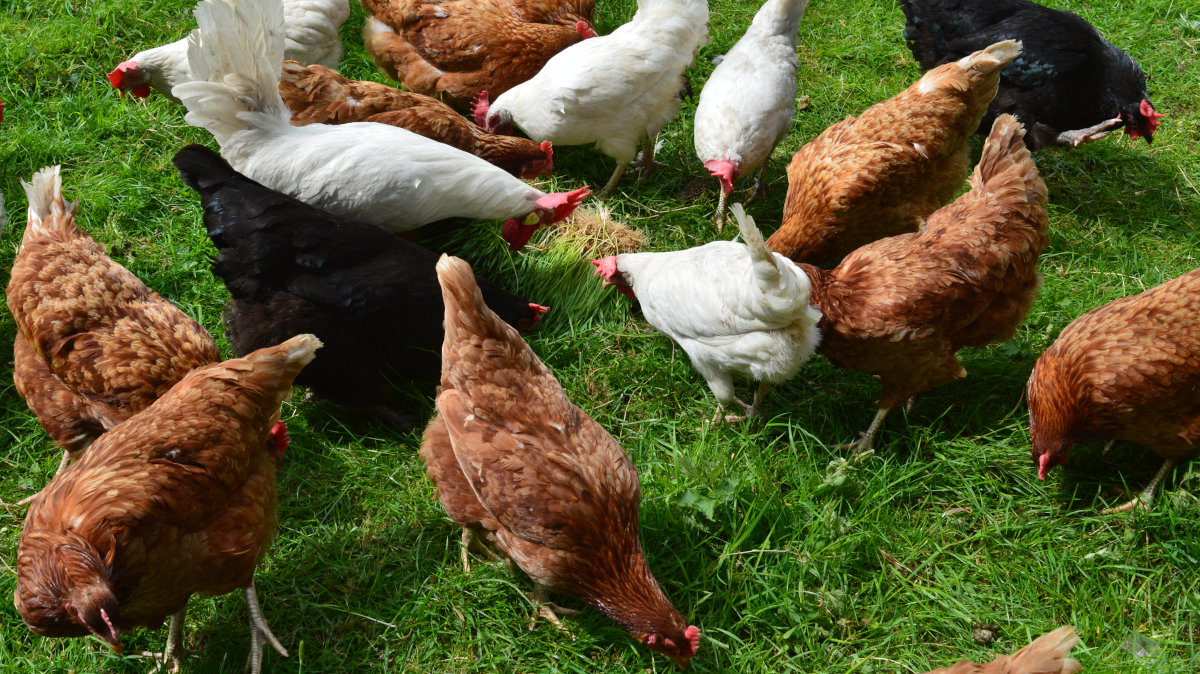
Table of Contents
- Grass, greens and pasture for chickens in winter:
- Do your chickens miss foraging for greens and grass in the winter?
- How can you provide greens and grass for chickens in winter?
- What greens are good for chickens?
- How to feed greens to chickens:
- What greens should Chickens not get?
- Getting pastured eggs in winter:
Grass, greens and pasture for chickens in winter:
We all know that fresh grass and greens are good for chickens. Mine spend a considerable amount of time each day wandering around my fields nipping of the growing tips.
However, grass is actually more nutritious to chickens than you may think. First of all, eggs from hens who eat grass will have healthier, darker egg yolks, a better hatch rate and will taste better.
Grasses and greens also helps meet some of chicken's protein needs in the form of amino acids. For example, rye grass has is between 11-16% protein making it an excellent food choice for chickens.
Below: I grow fodder in trays on my window sill in winter for my chickens.
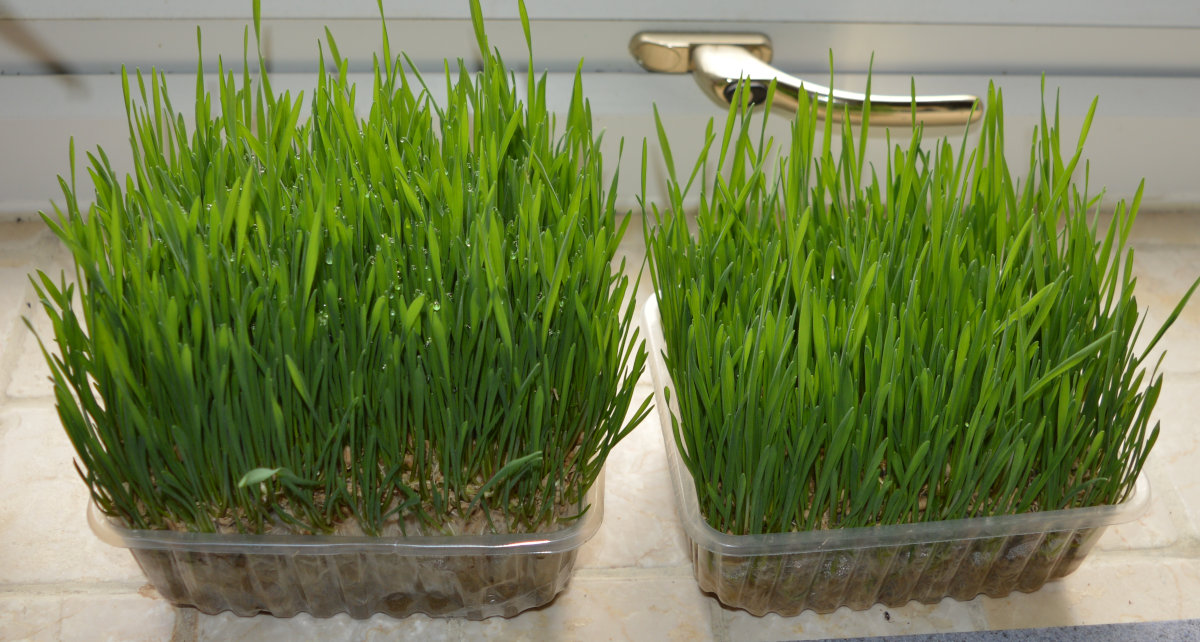
Chickens need fresh greens in winter for the same reason they need them in any other season: they are a good source of vitamins, minerals, and other nutrients that are essential for their health.
Some of the key nutrients found in fresh greens include:
- Vitamin A: Important for vision, growth, and reproduction
- Vitamin K: Essential for blood clotting
- Calcium: Needed for strong bones and eggshells
- Iron: Helps to transport oxygen throughout the body
- Magnesium: Helps to regulate muscle and nerve function
- Zinc: Important for immune function
In addition to these essential nutrients, fresh greens also contain antioxidants that can help to protect chickens from disease.
The best way to provide fresh greens for chickens in winter is to grow them yourself. If you don't have a garden, you can also buy them from a farmers market or grocery store.
When choosing fresh greens for chickens, look for dark, leafy greens like kale, collard greens, spinach, and chard. Avoid iceberg lettuce, as it has very little nutritional value.
It is important to only give chickens fresh greens that have not been treated with pesticides or herbicides in the last 12 months. You should also wash the greens thoroughly before giving them to your chickens.
Below: A chicken eating a cauliflower plant. Hang the whole plant up and let them peck at it.
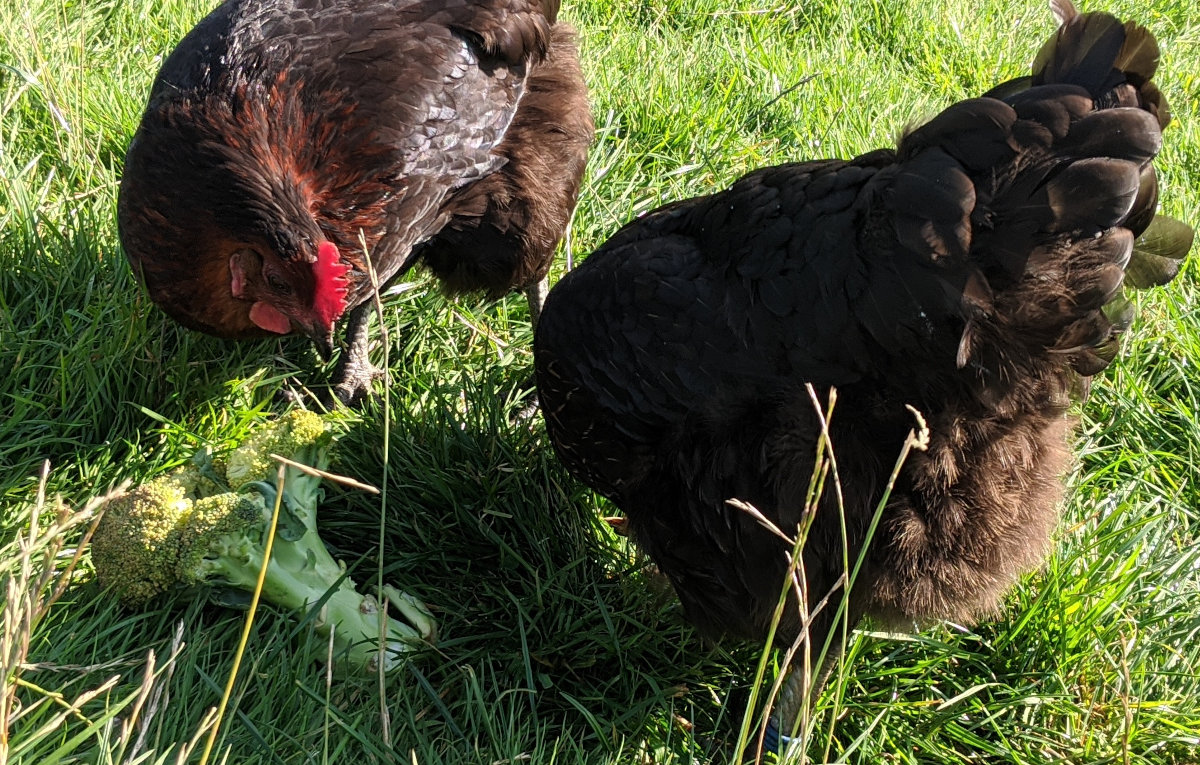
In summer for me, foraging provides approximately one quarter of a chickens daily nutrient requirements resulting in them eating less feed. Therefore, you will spend less money paying for feed.
Grass is high in calcium, protein, iron and vitamins E and C. Do not worry if your flock gets some weeds along with the grass. Some weeds like dandelion or alfalfa will cause hens' egg yolks to be darker in colour because of the extra pigments.
Fresh greens provide a range of vitamins, minerals, and nutrients that might be lacking in their regular winter diet, which can mainly consist of grains and store-bought feed.
Do your chickens miss foraging for greens and grass in the winter?
Absolutely. Chickens love to forage for greens and miss it in winter. The quality off the eggs will be poorer as well if you birds are not getting greens in their diet.
Pecking and foraging for greens can help alleviate boredom in confined winter spaces, reducing the risk of negative behaviours like pecking at each other.
While greens are beneficial, they should complement a balanced diet, which includes a quality poultry feed appropriate for the birds' age and needs.
Below: Try hanging a cabbage in the coop during winter. Try to get one with as many leaves on as possible.
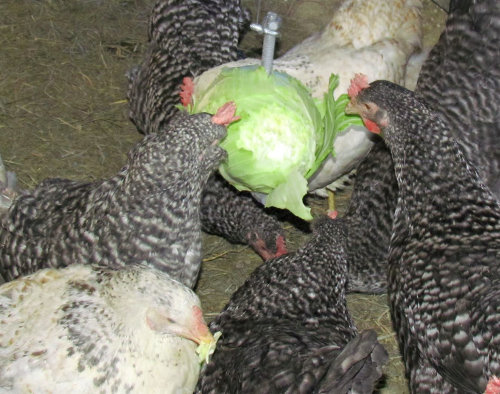
You can help by buying your fresh veg with it's greens still attached like the tops on carrots or the leaves on cauliflowers.
How can you provide greens and grass for chickens in winter?
The best ways to provide fresh greens to chickens during winter are:
Winter-Hardy Plants: Choose plants that can withstand colder temperatures, such as kale, collard greens, Swiss chard, and certain types of lettuces. These can be grown in protected environments like cold frames or even indoors in pots.
- Sprout seeds on your window sill. Sprouted grains are not the best as they are labour intensive and provide as much grain as green. They are easy to produce and perfectly acceptable if you have nothing else. Pea shoots make excellent sprouts and produce loads of greens quite quickly.
- Fodder Systems: Consider setting up a fodder system, where you sprout grains like barley or wheat in trays. The sprouts become nutrient-rich fodder for the chickens.
- Chopped Kitchen Scraps: Offer kitchen scraps like carrot tops, apple peels, and leftover greens. Just make sure not to provide anything that's harmful to chickens.
- Grow Kale, swede or turnips, Both are very hardy plants that stand well without spoiling in cold weather.
- Use store-bought greens. Fresh greens in the garden are usually hard to come by in the winter. I can buy Spring greens all winter quite cheap and I have a deal with my local farmers’ market to buy some of their leftovers
- Let grains and seeds sprout naturally in the run. Place a raised mesh over them so the hens can't scratch them up. The greenery grows through the mesh and hens can peck the tips. Dandelions are good for this, they are hardy and produce greens even in cold weather.
- Alfalfa. Normally a supplemental feed for other farm animals it can be used for chickens. I can buy Alfalfa meal in pellet for that just needs water adding to turn it into green feed. It works well especially for ducks and can be stored indefinitely. Alfalfa products are easy to find being stocked at most animal feeds merchants.
- Freezing. My least favourite method but greens can be frozen and stored till they are needed. I place them in a bag and freeze. Then crush the contents of the bag into frozen flakes. Add the flakes to feed.
Lawn clippings are an obvious substitute for pasture, though of course they aren’t available except in weather where the chickens might just as easily go outdoors. In this modern age, maybe it’s practical to freeze lawn clippings if you only have a few hens.
Grass clippings are also practical if your chickens can’t range widely just don't use fertilised or pesticide contaminated grass cuttings.
What greens are good for chickens?
Kale was particularly popular in the Pacific states, since it can be left standing in the field all winter and nothing will happen to it. The others were stored in the usual ways.
Below: Pea shoots are cheap and easy to produce, sprout in cold weather and can be kept for a while.
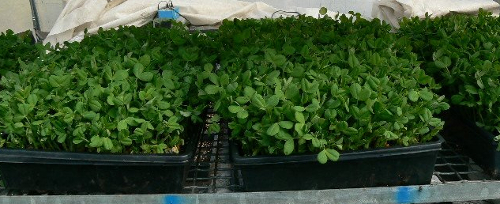
Of course, these days such vegetables are available fresh year-round, and maybe you can get them for free through the discards of your local supermarket.
Here are some great choices for growing greens in your own garden and then hand-feeding to your chickens:
Arugula, beet tops and leaves, Brussels sprouts, carrot and their tops, pea shoots, collard greens, endive, kale, kohlrabi, lettuce (avoid iceberg), mache (corn salad), mizuna, mustard, radicchio and most herbs.
Below: Try planting root vegetables till they grow new leaves and then harvest these for your birds.

Leafy greens are best as the oxalic acid in brassicas, spinach, sorrel and some other vegetables and plant can bind with calcium reducing it's bio-availability. It can cause kidney stones in humans if eaten in great quantities but I have never seen or heard of this problem in chickens.
Given that treats shouldn't be more than 10% of their diet, I think it would be hard to give them enough to have bad effects.
They are filled with vitamins A, B, C, E, K and contain iron, magnesium, phosphorus, potassium, zinc and lots of calcium.
Here are some safe weeds to feed your flock:
Clover, Burweed, Catsear, Chickenweed, Purslane, Yarrow, Dandelion, Shotweed, Fat Hen, Hawkweed and Bitter Cress. There are others so look into your local availability and if you are unsure what you have then rip it out and plant something you can identify.
Of the weeds you can give to chickens dandelions are my favourite, they sprout early in spring, grow fast and are resilient. The seeds are easy to find and they grow back year after year.
In my experience chickens known what to eat and what to avoid so it is unlikely you will have any problems. I have had thousands of chickens over the years, all free range and not one of them has ever been poisoned by a plant.
Common herbs chickens will love:
There are tons of herbs and plants beneficial to human health. Some herbs tend to be quite hardy plants and can stand the cold quite well. Parsley in particular.
Parsley, Chive, Sage, basil, Cilantro or Coriander, Mint, Chervil and Oregano.
Herbs have many benefits for chickens, they are filled with vitamins and minerals. Some are quite hardy and will stand in cold weather outdoors for several months. You should feed it directly to your flock either fresh or dry. My hens like to pick the leaves off the plants.
Lavender is highly aromatic and soothing. Lavender is best given fresh in the nest boxes where hens will enjoy it's soothing scent. You can also hang bouquets of it in your coop or run. That is why it is one of the most common herbs found in nest boxes.
How to feed greens to chickens:
The easiest way to feed greens to your chickens in winter is to chop them up and add them to the food ration for the day.
Hang whole cauliflowers or cabbages in the chicken run for them to peck at.
Below: Feeding greens to your backyard flock.
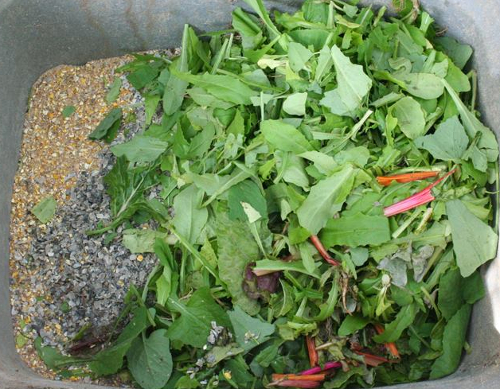
If your are sprouting seeds or growing fodder for your birds try to get into the rhythm of producing a batch a day that they can easily finish to keep the waste down.
What greens should Chickens not get?
You may want to go and cut all the grass you can for you flock with this new information. However, there are some things to be careful of when allowing your flock to eat grass. Make sure its not treated with any chemicals or pesticides.
If you watch your chickens free range you will notice that they only eat the tops of the grass blade. The reason for this is because if they eat the entire blade, they risk the chance of crop impaction. So when harvesting grass for them, avoid giving them long, thick pieces. Be sure you only feed grass blade pieces no smaller than 1" and never just grab a handful of grass and throw it to your flock. Do not feed long or fibrous grass or plants.
Here are weeds and plants to stay away from (Note that most chickens will not eat plants they know are bad for them but it's still good to be safe):
NEVER feed buttercup to chickens. It can kill them. Azalea, Rhododendron, Henbane, Black Nightshade, Clematis, Foxglove, Castor Bean, Irises, Oleander, Vetch, St. John's Wort, Sweet Pea, Honeysuckle, Privet and Trumpet Vine are other plants that are poisonous to chickens..
There are many other, research your local ones or take a look at plants that are poisonous for chickens. link.
Getting pastured eggs in winter:
If fed correctly grass and weeds will provide you chickens with plenty of nutrients and even reduce feed costs! During the growing season it’s easy to pasture livestock, offering them a healthy and varied diet. When the snow flies, though, things get harder.
If you have the space make use of a hoop house or poly tunnel to grow greens in winter.
But even in a Northern winter you can offer your animals fresh greens by sprouting grains indoors. This sprouted grain grass is often called “fodder” a slightly confusing term since it’s also used generically to mean animal feed.
You can buy an expensive ready-to-go fodder system in order to enjoy these benefits. Or you can spend a little bit of time and a very little bit of money and create a fodder system of your own.
Our chickens enjoying some fresh greens. I grow pea shoots in our greenhouse and after harvesting the tops of the plants, we feed the remainders to our chickens. Their eggs are delicious.
They love scratching around in the piles, eating the fresh shoots and doing what chickens do best. They are housed in our cold frame over the winter, and will be moving out to pasture as soon as the snow melts!
